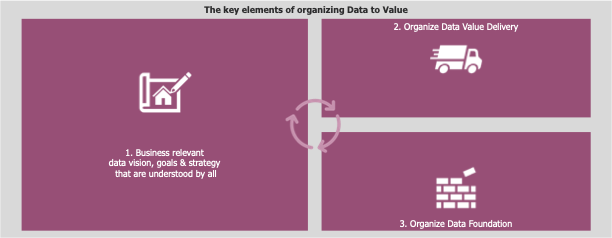Did we just meet the modern day Don Quixote?
Why don’t they get it?
Frustration filled the room like toxic black smoke during a recent conversation with a data governance specialist at one of our clients. “Why am I not getting the attention that is needed to get our data governance up to scratch? Everyone seems to believe in the value potential of data but no-one is willing to tackle the fundamental issues we clearly have. I know exactly what needs to be done and have expressed this an unmeasurable number of times. Why don’t they get it?”
Had we just met the modern day Don Quixote? Maybe, but from our experience this Don Quixote does not stand alone. We regularly encounter situations where magic is expected from data and the data team without sufficiently acknowledging the need to improve the foundation.
In the following blog series we would like to share with you the typical approaches that Anderson MacGyver deploys to overcome such challenges and to get business and data people to better understand each other and jointly create value.
Key elements of Data to Value journeys
At the highest abstraction level, successful initiatives to get more value from data consist of the following three elements
- Business relevant data vision, goals & strategy that are understood by all
- Organizing Data Value Delivery
- Organizing Data Foundation

Two practices for achieving impactful change
Besides ensuring that all stakeholders have a clear and common understanding of a business relevant data vision, goals and strategy, the two keys to delivering a sustainable and impactful change with data are
- Build tangible bridges between business value and data capabilities
- Balance your value delivery and foundational efforts

Note: Data Value Delivery encompasses all activities and associated capabilities that deliver data products that are used by the business and either constitute or directly contribute to, business value. Data Foundation covers all activities and associated capabilities that enable Data value delivery, but do not directly contribute to nor constitute business value. Organization of both sets of activities and capabilities is captured in a data operating model that defines way of working, processes, organization structure, people resources, governance, systems & technology and sourcing approach.
We will focus on the theme of building bridges in part 2 of this blog: Throwing a clump of earth into the reed
You can also read part 3 of the blog already: Focus on the tap and on the plumbing
Want to be the first to know we have a new blog? Follow us on LinkedIn!

 Your digital ambitions
Your digital ambitions  Your digital ambitions
Your digital ambitions